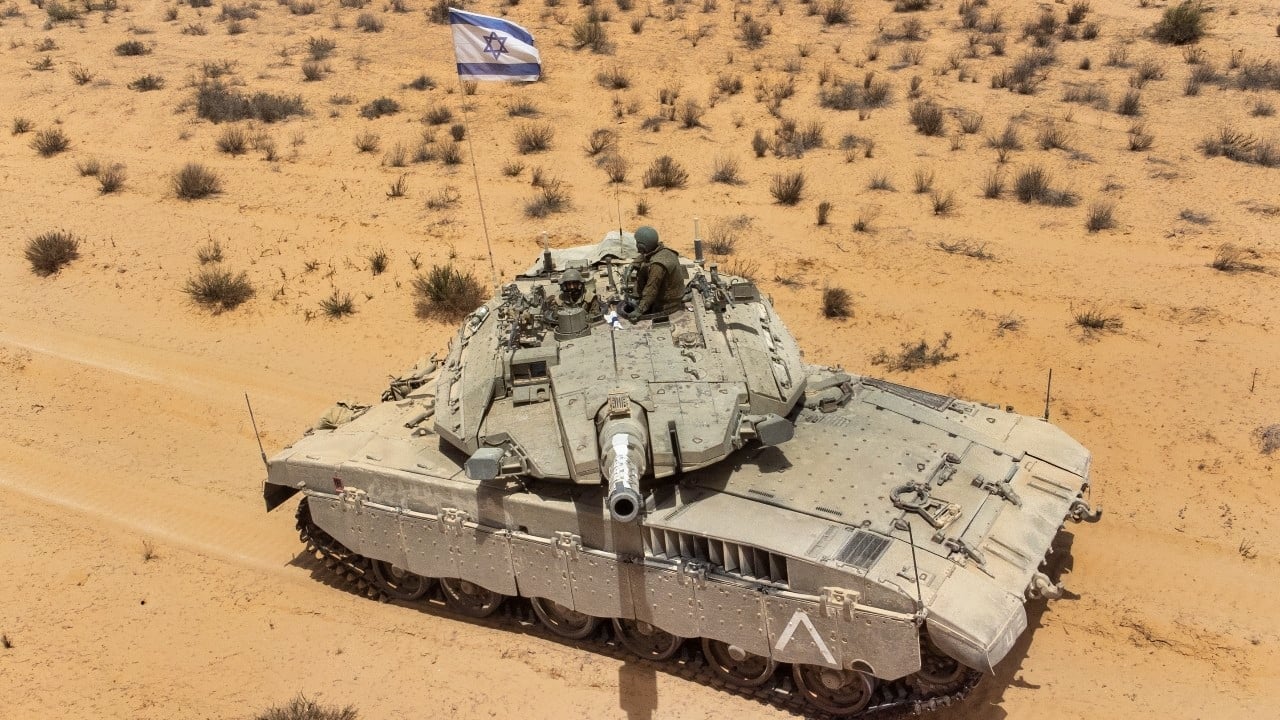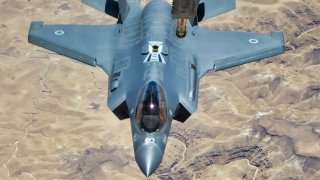The IDF’s Double Offensive: Israel’s Bold Move Against Hezbollah and West Bank Militants
Israel now faces new strategic choices. It is seeking to cement its defeat of Hamas in Gaza and retain control of the southern Gaza Philadelphi corridor along the border with Egypt. It hopes to blunt terror attacks in the West Bank and Hezbollah’s attacks in Lebanon. At the same time, it faces Iranian-backed attacks from militias in Iraq, Syria, and Yemen, as well as Iran’s own threats to carry out more attacks.
On August 25, the Israel Defense Forces carried out airstrikes on dozens of targets in Lebanon, blunting a Hezbollah attack hours before the attack was expected to take place. The airstrikes, conducted by one hundred aircraft, were designed to preempt a large attack that could have wreaked havoc across central and northern Israel. Three days after preempting Hezbollah’s attacks, the IDF launched a large multi-pronged raid into Palestinian cities in the northern West Bank, aimed at defeating a growing wave of terror attacks.

The two IDF operations, seventy hours apart, illustrate a new strategy by Israel to take the initiative against Iranian-backed threats. This new strategy is important because Israel has largely been reacting to attacks since the October 7 Hamas attack on Israel that killed more than 1,000 people last year. The IDF’s reaction to that assault was to begin an air and ground offensive in Gaza. However, the war in Gaza has been slow going. The IDF recently redeployed and withdrew its 98th Division from Khan Younis. The division had been sent to southern Gaza for the second time because Hamas fighters kept returning to areas that the IDF had already taken and cleared.
Israel has been focused on the war in Gaza. It has chosen to react proportionately to threats by Hezbollah in northern Israel. Hezbollah, backed by Iran, has launched more than 7,500 rockets and 200 kamikaze drones at Israel over ten months. In addition, the Iran-backed Houthis have targeted Tel Aviv, Eilat, and commercial shipping in the Red Sea. Israel has only carried out one known retaliatory attack on the Houthis in the form of a strike on the port of Hodeidah. Iraqi-based militias and militias in Syria have also attacked Israel with drones. Israel has generally not responded to these attacks.
Now, Israel may be shifting its focus and doctrine. Foreign Minister Israel Katz said on August 28, “The IDF has been operating since last night in the Jenin and Tulkarm refugee camps to dismantle Islamic-Iranian terror infrastructures established there. Iran is working to destabilize Jordan and establish an eastern terror front against Israel, following the Gaza and Lebanon models, by funding and arming terrorists and smuggling advanced weapons into Jordan and then into Judea and Samaria” (“Judea and Samaria” is the term Israel uses for the West Bank).
The challenge in the northern West Bank is that numerous armed groups, including Hamas and Palestinian Islamic Jihad, have been taking over areas such as the Nur Shams camp near Tulkarm. The urban area, based around a historic refugee camp, has become ground zero for armed men seeking to spread terror throughout the West Bank.
The targets of the IDF’s raids into areas in the northern West Bank are local commanders in places such as Jenin, Tulkarm, and other areas. While carrying out the raids, the IDF has uncovered evidence of how armed groups in the northern West Bank are setting down roots. In one town, the IDF found an explosives laboratory, according to footage released by the Israeli military. This level of terrorist infrastructure is new to these areas in the West Bank. Not since the Second Intifada more than twenty years ago did these groups have access to explosives to make improvised explosive devices. Now Hamas leader Khaled Mashaal is calling for the group to renew suicide bombings for the first time in twenty years. Israel is seeking to preempt a new terror wave from growing in the West Bank.
Meanwhile, on the northern front, Israel has sought to do the same thing. “Approximately 90 percent of the targets struck were short-range rockets aimed at northern Israel. Hezbollah planned to harm Israeli civilians. Hezbollah managed to launch only about two hundred and thirty rockets and over twenty unmanned aerial vehicles. Most of them either fell on their way to Israeli territory, landed in open areas, or were intercepted by Israeli Air Force defense systems and Israeli Navy ships,” the IDF’s spokesperson, Rear Admiral Daniel Hagari, said on August 25.
With Hezbollah’s attack preempted, the question of what comes next remains. Will the battle in the north now return to the norm after October 7, where Hezbollah carries out daily attacks, and Israel responds proportionately with precision strikes? On August 29, Israel’s Minister of Defense Yoav Gallant held a strategic briefing with the IDF’s Chief of Staff and other officers to discuss the path forward in the north.
Minister of Defense Yoav Gallant recently held a strategic briefing and discussion together with the IDF Chief of the General Staff and senior IDF officials. “Over the past 11 months, we have faced attacks from seven different fronts and responded effectively. In Gaza, we have defeated most of Hamas’s brigades and battalions, including their military leader, Mohammed Deif, along with numerous other terrorists,” he said. Then, he said it was essential to create the conditions in northern Israel that would allow civilians to return to the border. Israel evacuated almost 80,000 people from northern Israel in October 2023 due to the Hezbollah threats. Those evacuees are now facing the possibility of being away from home for a second year.

Israel now faces new strategic choices. It is seeking to cement its defeat of Hamas in Gaza and retain control of the southern Gaza Philadelphi corridor along the border with Egypt. It hopes to blunt terror attacks in the West Bank and Hezbollah’s attacks in Lebanon. At the same time, it faces Iranian-backed attacks from militias in Iraq, Syria, and Yemen, as well as Iran’s own threats to carry out more attacks. In August, the IDF seized the initiative on two fronts. It remains to be seen if the IDF brass and Israel’s leadership can keep up the initiative as Israel approaches the first anniversary of the October 7 attack.
About the Author:
Seth Frantzman is the author of The October 7 War: Israel’s Battle for Security in Gaza (2024) and an adjunct fellow at The Foundation for Defense of Democracies.
Images: Shutterstock.com.


